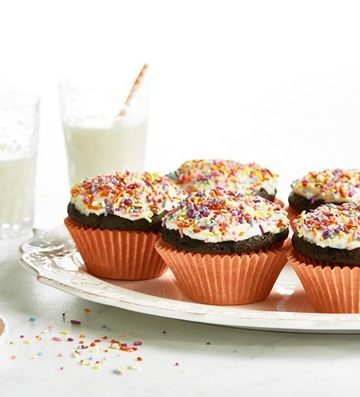Hey everyone!
Happy Hump day!
I have been asked several times where I came up with the name for Oh She Glows.
It has to do with something a very dear friend of mine told me.
Leah and I met in university and we have been dear friends ever since. We have gone through a lot together, including our struggles with self-acceptance, healthy living, and our weight. There were times in university when I wasn’t good to my body- I wasn’t eating healthy, I was starving myself, or I was over eating the wrong stuff.
I was upset that I gained weight and couldn’t fit into many of my clothes. Leah went through all of this with me, and we shared our struggles to find a balance- a place where we could be content and free of any obsession with weight, the scale, food, or exercise.
Throughout university, I slowly started to achieve this balance. It took a while with many failed attempts and lots of frustration. Old habits die hard.
But I did achieve this healthy balance eventually. See My Road To Health (Parts 1-10). And when I did, Leah sure knew it.
I will never forget when she said this,
“I can tell right away that you are healthier, you have a GLOW to you that you didn’t have before!”
And I thought to myself…a glow? Really? Was it the new irridescent moisturizer I was using?
Surely, a healthy lifestyle couldn’t really transfer directly to the skin, could it?
Oh but it does.
See, what I learned from this is that when you lead a healthy lifestyle, everything- every factor in your life- is affected.
- Your relationships with others (family, friends, partner, strangers, etc)
- Your relationship with yourself (very, very important!!!)
- Your physical health (how many colds you get, your ability to sleep at night, energy levels, etc)
- Your mental/psychological health (strongly related to your relationship with yourself- self esteem, self confidence, etc)
- Your job/career, school (ability to focus, concentrate, motivation)
- Goals, motivation, aspirations
Health is a circular relationship.
I was happier, and happiness radiates on the inside as well as on the outside.
Leah was right, I do glow. And I thank my healthy lifestyle for an improved sense of well being.
And so to pick a name for the blog, I wanted it to be significant and to reflect a part of my journey.
I also want to show others that it is possible to overcome obstacles and bad habits and to achieve a fuller life and a better sense of well being!
SO there you have it- how I named Oh She Glows (and then Glo Bakery)! It is a part of my history if you will.
Drop me a line in the comments section and let me know what obstacles or bad habits you have overcome in your own personal journey. I would love to hear about it.
~~~~~~~~~~~~~~~~~~~~~~~~~~~~~~~~~~~~~~~~~~~~~~~~~~~~~~~~~~~~~~~~~~~~~~~~~~~~~~~~~~~~~~~~~~~~~~~~~~~~~~~~~~~~~~
And now for a health research story to expand and challenge your mind:
I have wondered this many times and now there is science to back it up!
Question: Will exercising outside in the Winter freeze my lungs?
The Short Answer: You will be happy to learn, that NO, exercising in temperatures below zero will not harm your lungs. But you should be wary for breathing problems if you are suceptible to asthma.
The strangest story that Michel Ducharme, a scientist with Defence Research and Development Canada, has encountered is the Nordic skiers who were swallowing Vaseline to coat their airways as a protective measure against cold air.
“That’s just crazy,” he says – and entirely unnecessary.
Dr. Ducharme is the researcher whose work led to a major revision of the wind-chill scale earlier this decade, thanks to the efforts of volunteers who sat in a frigid wind tunnel until their faces developed frost nip. And he’s happy to dismiss the idea that your lungs will suffer from contact with cold air. “The heat exchange is very quick,” he says, “and there’s no evidence of any risk of freezing tissue.”
This may be cold comfort for people who swear they are overcome by coughing fits or throat pain when they exert themselves in subzero conditions. Indeed, cold air has long been implicated in exercise-induced bronchoconstriction, an asthma-like narrowing of the airways that leads to shortness of breath and coughing. EIB affects between 4 and 20 per cent of the population.
In these cases, though, it’s the dryness of the air, not its temperature, that triggers the response, says John Brannan, a researcher at McMaster University’s Firestone Institute for Respiratory Health in Hamilton. The cells that line our airways are highly sensitive to dehydration, and breathing hard during exercise greatly increases the amount of dry air rushing past these cells.
Although this hypothesis has been disputed for many years, recent experiments by Kenneth Rundell, a researcher at Marywood University in Scranton, Penn., who spent 10 years as an exercise physiologist with the United States Olympic Committee, have shown that warm, dry air and cold, dry air trigger identical responses.
There are some makeshift solutions: Wearing a scarf or balaclava over the mouth can moisten the air as it is inhaled. “That makes breathing more difficult,” Dr. Rundell notes, so it’s less useful for skiers or runners in competition, but may be fine in training. Commercial heat-exchange masks, which accomplish the same thing with less breathing resistance, are also available.
If the EIB symptoms are serious – and confirmed by a lung-function test administered by a doctor – asthma medication can help alleviate the symptoms. Contrary to what some athletes and coaches believe, though, there’s no performance benefit to taking these medications if you don’t suffer from EIB, Dr. Rundell says.
It’s still not clear whether chronic intense exercise can lead to EIB. Winter Olympic athletes have a higher prevalence than the general population does, but so do summer athletes, who breathe in more pollution and allergens. This is a more controversial topic and only relevant to those training at elite levels.
For most people, it’s safe to conclude that, short of an asthma attack, exercising outside in the dead of winter is perfectly safe.
Some people do experience a burning sensation in their throat or upper airways when they exercise in the cold, Dr. Rundell says, “but that’s just a response of the nerve endings.”
In other words, you’re not freezing your lungs – so you might as well keep going.
I am glad to hear this! :)
Do you workout outside in the Winter time?
See you tonight!
~~~~~~~~~~~~~~~~~~~~~~~~~~~~~~~~~~~~~~~~~~~~~~~~~~~~~~~~~~~~~~~~~~~~~~~~~~~~~~~~~~~~~~~~~~~~~~~~~~~~~~~~~~~~~~
And in the end it’s not the years in your life that count. It’s the life in your years.
– Abraham Lincoln





What a great story! I love how the name has personal significance for you.
Thanks for sharing that with us! I love the name. :-)
I love your story! You certainly do have a glowing personality which shows even through blogland – it must really glow in person!
I have been exercising out of doors so far this fall/winter season. It was about 40* F when I was out running this weekend, which isn’t *that* bad yet. But once the snow flurries start, I’ll probably stick to indoor exercising. I only get a chance to work out outside over the weekend though. But if there is ever a really good day to be outside this winter, I’ll take the opportunity.
GREAT story :) i am in the midst of trying to get back to my happy self which has eluded me of late… so i have had a hard time thinking of achievements lately.
i have trouble running outside when it gets too cold (below 20?) due to exercise-induced asthma, but i’ll try if it’s not too windy ;-)
AMAZING, incredible story of your blog’s origins!! Love it.
**I workout inside during the winter.
So glad to hear more about the name :) You really do glow, and I’ve noticed that since I’ve started on my journey of self-acceptance and health, I’ve been glowing more too. We probably had similar college stories – first I ate too much of bad stuff, then I went through a couple years of restricting, and now that I’m out I’m trying to nourish and love my body.
I love your blog! I do exercise in the winter, but I live in California so it’s pretty mild. I walk for an hour every day outside and I do yoga each morning. I’m trying to start doing yoga at night too.
Have a lovely evening!
I love the story on the origin of your blog. You have recently inspired me to start my own blog about my journey toward a healthy lifestyle! I feel motivated reading your blog everyday so I figured writing my about my own journey would help me even more. Thanks again for the inspiration!!!
Love the story. I do not work out in winter because I’m kind of a total wuss and hate the cold. That story about skiers swallowing the vaseline was so disturbing. Ick.
beautiful :)
You have always glowed in my eyes :)
What a great story! For me I struggle with being consistent with the gym – even though I know I feel better when I go.
You do glow! I can tell from your pictures. And you are right – leading a healthy lifestyle does improve every aspect of my life.
For me, it is hard to exercise consistently, especially when I have other commitments with deadlines. I am currently addressing this by doing a 30 day trial where I will exercise every single day for an hour (it’s probably good to do it during the holiday season, too…). After all, it only takes a month to develop a habit!
PS. I love that Abraham Lincoln quote! You can pretty much tell where I got the name for my blog from :)
http://lifeinyouryears.wordpress.com/
Great story Angela!
I struggle with a lot of things with regards to living a healthy lifestyle. One really bad habit that I’d like to kick is drinking Diet Coke. I have a can everyday. Terrible I know. Maybe a good new year’s resolution for me?
man we are so alike in the health overcoming issue it wasnt till after college that I had the relization that I needed a HEALTH MAKEOVER!!!! I love that you shared all of this so real and open! I do not have to run in the cold I live in Southern CA!!! lol
Hello – I love your blog! You seem so optimistic and cheerful, I love it! :-)
I am weird and don’t really mind running outside in the winter. I am naturally cold ALL the time anyway, but if you bundle up pretty good, it’s not too bad once you get going. Although I did a 15 mile run in -7 degree temps…all of my water bottles froze. I would NOT recommend doing that again!
I loved this summary of your healthy lifestyle philosophy, and I also appreciated the article about exercising in cold winter air. Thank you!
I just went back and read through your road to health. Very inspiring! Thank you for writing it all out :)
Wow, I just discovered your blog and I love it! I know what it’s like to have “the glow” and right now I don’t..trying to get back to a place of health in my life.
Hi Angela,
It is truly inspiring how you overcame your health problems and turned it into something positive with this blog and your cookbook!
I have been suffering from serious health problems since many years. Lots of things have improved already. But unfortunatelly my weight and the amount of times I binge have been going in the opposite direction.
I hope by reading your blog and healthy recipes I will find the enthusiasm to take better care of myself. I know it won’t go easy, but I have to find a way!